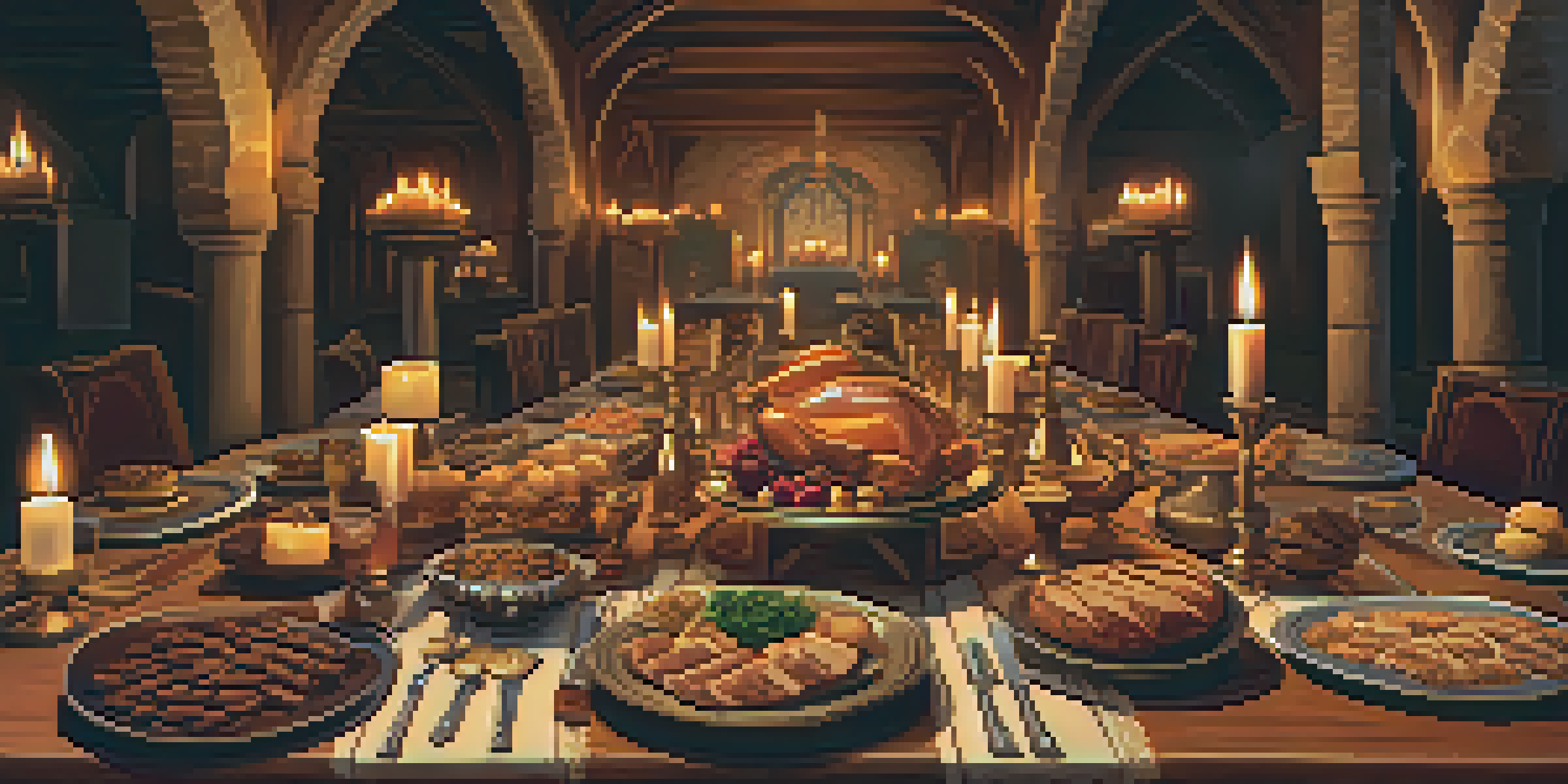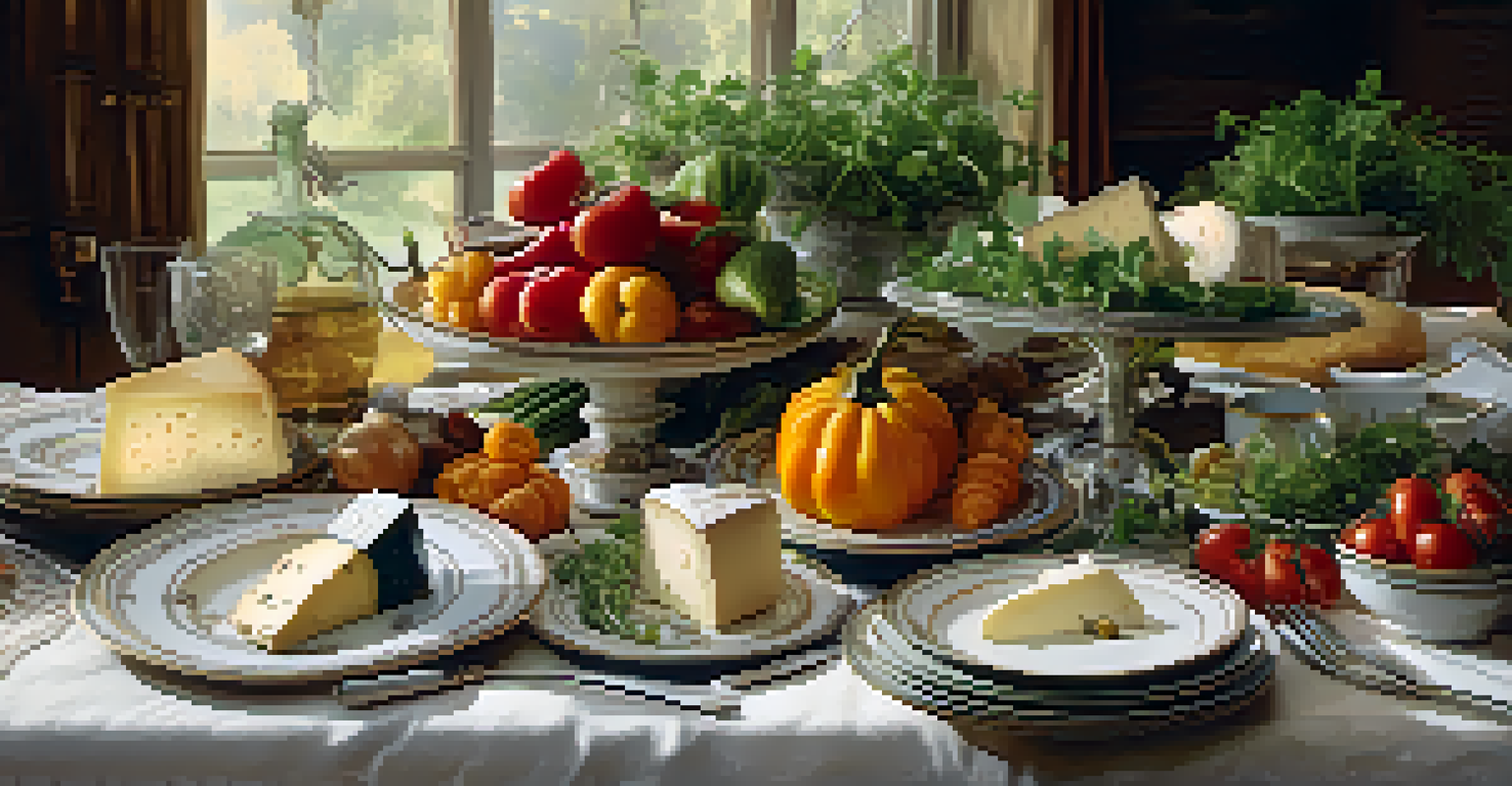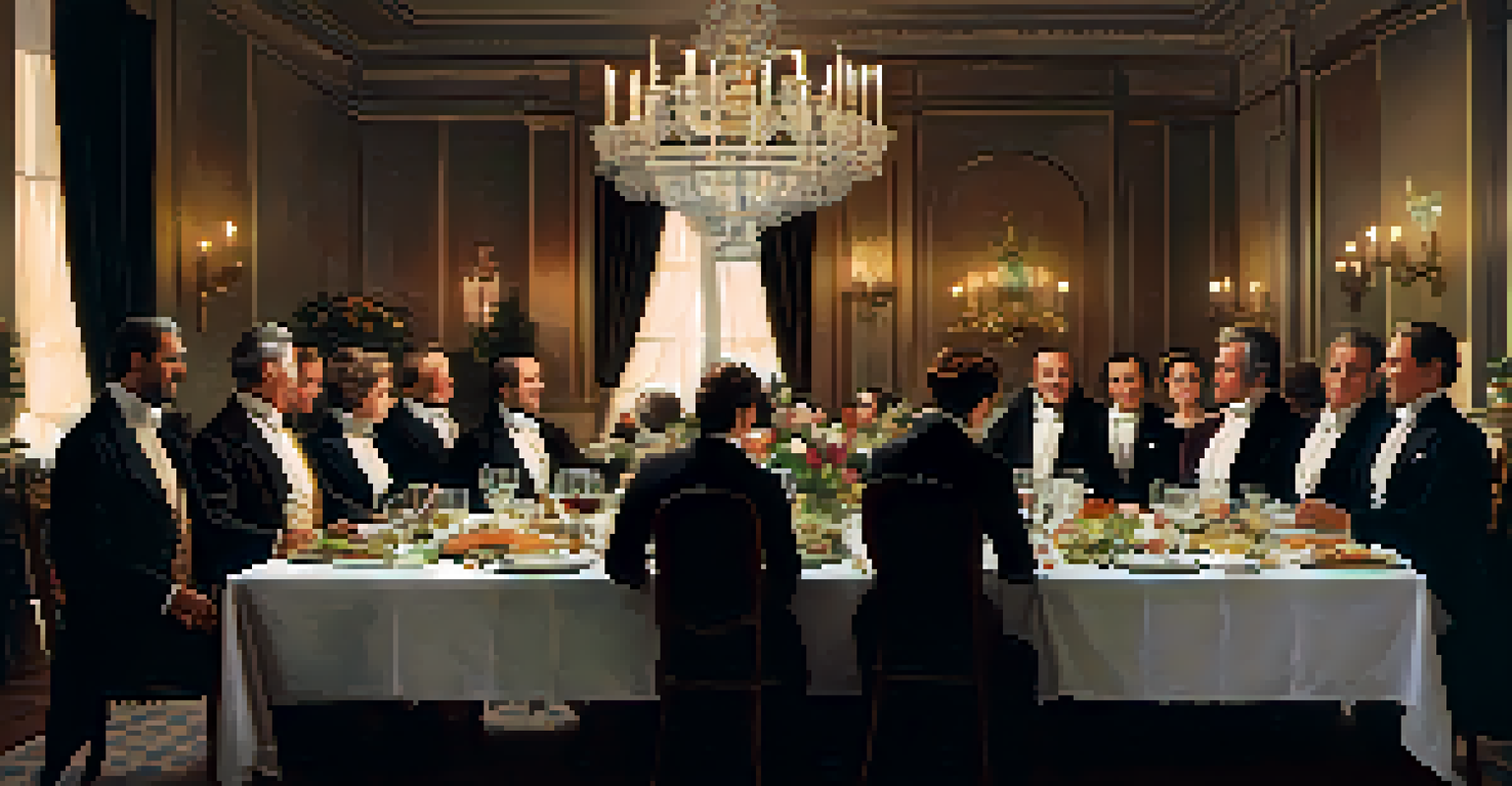Recreating Historical Banquets: A Culinary Challenge

Understanding the Significance of Historical Banquets
Historical banquets were more than just meals; they were events that showcased culture, status, and culinary art. From royal feasts to community gatherings, these occasions reflected the values and traditions of the time. Understanding their significance helps us appreciate the effort involved in recreating them today.
Food is our common ground, a universal experience.
These banquets often featured lavish displays of food, intricate table settings, and entertainment, creating an immersive experience for guests. For example, a medieval banquet could include roasted meats, spiced wines, and elaborate pastries, all intended to impress attendees. This historical context adds depth to the culinary challenge.
By studying these events, we can learn about the ingredients, cooking methods, and social practices of different eras. This knowledge not only enriches our culinary skills but also connects us to the past, making the experience of recreating these banquets more meaningful.
Researching Recipes from Different Eras
Diving into historical cookbooks and manuscripts is essential for recreating authentic dishes. Many recipes from centuries ago can be found in texts that document the culinary practices of their time, offering a glimpse into the flavors and techniques used. This research phase can be both exciting and enlightening, as it often reveals unexpected ingredients and methods.

For instance, a Renaissance feast might call for dishes flavored with herbs and spices that were once rare and expensive. Understanding the context behind these ingredients allows us to appreciate their value and significance. Plus, experimenting with these recipes can introduce us to new tastes and cooking methods.
Historical Banquets Reflect Culture
These events showcase the culinary art and social values of their time, making them significant beyond just the food served.
However, not all historical recipes are straightforward. Some require interpretation and adaptation to fit modern palates and available ingredients. This process of trial and error can be part of the fun, allowing for creative twists on traditional dishes while respecting their origins.
Gathering Authentic Ingredients for the Feast
Once the recipes are in hand, sourcing the right ingredients becomes a vital next step. Many historical dishes rely on ingredients that were locally available during their time, which means visiting farmers' markets or specialty shops might be necessary. This not only enhances authenticity but also supports local producers.
Cooking is like love; it should be entered into with abandon or not at all.
For instance, if recreating a Victorian banquet, you might seek out heirloom vegetables or artisanal cheeses that resemble those used during the era. These ingredients can elevate the dishes, providing a taste that’s closer to what would have been served at the original banquet. Plus, the hunt for these unique items can be a thrilling adventure.
However, it’s important to remember that some historical ingredients may no longer be available or legally sourced. In these cases, finding suitable substitutes or modern equivalents is key. This flexibility allows for creativity while still paying homage to the past.
Planning the Layout and Ambiance of the Banquet
A successful historical banquet isn’t just about the food; the presentation and atmosphere play a crucial role. Setting the scene involves careful planning of table layouts, decorations, and even music to evoke the spirit of the era. This immersive experience can transport guests back in time, making the event unforgettable.
Considerations might include using period-appropriate tableware, such as pewter plates or wooden utensils, to create an authentic dining experience. Additionally, adding elements like candles, floral arrangements, or themed centerpieces can enhance the ambiance. These details help guests feel as though they’ve stepped into a different time period.
Authenticity Requires Research
Diving into historical recipes and sourcing authentic ingredients is essential for recreating accurate and meaningful banquets.
Moreover, incorporating entertainment, such as live music or storytelling, can further enrich the experience. For example, hiring musicians to play traditional tunes can set the mood and draw guests into the historical context. This holistic approach transforms a simple meal into a captivating event.
Cooking Techniques Inspired by Historical Methods
Recreating historical banquets often involves using cooking techniques that may differ from modern practices. For example, methods like spit-roasting or baking in a wood-fired oven require a level of skill and patience that can be both challenging and rewarding. Embracing these techniques provides a genuine taste of history.
Learning about the tools and equipment used in different eras can enhance your cooking experience. Using a clay pot or a cast iron skillet can replicate the flavors achieved in historical cooking. While these methods may require more effort, they can yield incredible results that are worth the time invested.
Incorporating these traditional techniques into your cooking routine can also offer insights into the evolution of culinary practices. This connection between past and present enriches your culinary repertoire and fosters a deeper appreciation for the art of cooking.
Engaging Guests with Historical Context and Stories
To make the banquet truly memorable, sharing the history behind the dishes and the banquet itself can engage guests on a deeper level. This storytelling aspect helps create a connection between the food and the culture it represents. Guests will be more inclined to savor each bite when they understand its significance.
For instance, recounting the origins of a dish or the customs surrounding its consumption can spark intriguing conversations. Perhaps a dish was reserved for nobility, or a specific recipe was passed down through generations. These stories transform the meal into an experience that goes beyond just eating.
Engagement Enhances the Experience
Sharing stories and historical context during the meal helps guests connect with the food and fosters a sense of community.
Encouraging guests to participate in the storytelling can also make the event more interactive and enjoyable. By inviting them to share their own interpretations or historical tidbits, you foster a sense of community and collaboration, which is at the heart of any banquet.
Reflecting on the Experience and Lessons Learned
After the banquet, taking time to reflect on the experience can provide valuable insights. Consider what worked well and what could be improved for future events. This reflection not only helps in honing your skills but also deepens your understanding of the culinary history explored during the banquet.
Engaging with guests for their feedback can also be beneficial. Their perspectives might highlight aspects you hadn’t considered, enriching your future recreations. This collaborative spirit fosters a community of culinary enthusiasts eager to explore history together.

Ultimately, each banquet is a unique journey that combines history, creativity, and culinary art. Embracing the challenges and triumphs of recreating historical meals allows you to connect with the past and celebrate the joy of good food shared with others.